Pioneering Spirit
Pioneering spirit is fed by achievement, the more difficult the challenge, the more satisfying the process. Falling short whets the appetite for more. Failure is not to be feared, because in failing one proves that the planned objectives are not assured. There is just something about climbing the Grand; following in the footsteps of the forerunners of climbing. Our visit to the Grand Teton in 2014 caused an adrenaline surge in our novice group, not only because of the Park's deep history, but the challenges encountered for rookies finding our way through Teton mountainous terrain .
Running out of daylight, the decision to turn around 300 vertical feet from the top, though difficult, was correct for us. It is possible that the legends who went before us, would have been satisfied with our beginner efforts. Here are their stories…and our’s.
![The Rookies below the Grand]() The Rookies below the Grand
The Rookies below the GrandWould they draw him a map?
Flashback to 1924… Fresh in from out of town, 16 year old Paul Petzoldt was staying at the Crabtree Inn in Jackson, Wyoming when he announced his intentions to climb the Grand Teton, the 13,770 foot peak which dominates the range. There he met Billy Owens who was credited to have been with the first group to find their way to the top some 26 years earlier.
![Paul Pedzolt - The early years]() Paul Petzoldt - The early years. Park Service archives. Used by permission
Paul Petzoldt - The early years. Park Service archives. Used by permissionUp to that point, only three or four groups had recorded successful summit bids. When Owens recognized that Petzoldt was serious, he drew him a crude map. Petzoldt, having no previous climbing experience, made the summit, in his cowboy boots, and said later he was lucky to have returned alive. 1.
A large framed and eloquent person, Petzoldt went on to put up many first ascents in the Tetons, later climbed extensively in the European Alps and was a member of the first American K2 expedition in 1938. Perhaps best known as the founder of the National Outdoor Leadership School (NOLS), he believed that Americans needed to understand their wilderness, protect it, and learn from its lessons.
It was a formative time for the Grand Teton National Park, established in 1929, initially encompassing just the area of mountains. At that time, philanthropist, John D. Rockefeller, Jr. was in the process of anonymously buying all the private lands in the Snake River Valley north of Jackson with his eventual goal to donate the purchases to the Park Service and expand Yellowstone Park to the south to include the migratory grazing lands of Yellowstone elk and the lake regions at the feet of the mountains. 2.
![Glenn Exum]() Glenn Exum in his later years. © Jim Herrington from his forthcoming book The Legends of Climbing. SummitPost image 280278. used by permission
Glenn Exum in his later years. © Jim Herrington from his forthcoming book The Legends of Climbing. SummitPost image 280278. used by permissionIn the same year the park was established, Glenn Exum came to Jackson as a musician. Petzoldt took a liking to him. Seeing Exum as a “natural”, he escorted Glenn for his first trip to the top of the Grand that summer. Very alike in some aspects and very different in others, they discovered they were both attending the University of Idaho and their friendship was forged that next winter at school. They eventually teamed together to form the first guided service chartered to work in the national park, the Exum Mountain Guides.
When climbing the South Teton years earlier, Petzoldt, looking north, had seen a “big streak” on the Grand, which seemed to allow an approach to the prominent ridge running southeast from the summit. Petzoldt thought it might offer a new way up. In 1931, he encouraged Glenn to explore this route while Glenn was accompanying him on a guided climb with two other Austrian clients.
“Ex, see if that ledge will go”
At Paul’s insistence, Glenn crossed the gully past the Central Rib and ascended what is now known as Wall Street, the rock catwalk running up the sheer face. When Exum reached the end of the ledge, he stopped his progress to ponder the exposed move where the ledge is fractured, leaving an 8 to 10 foot opening down the three thousand foot face.
Exum describes the historic moment in a 1997 video recorded interview with John Martin Meek. 3. Perplexed and looking for direction from his mentor, Exum screamed back to Petzoldt
“It will not go. It will not go. I yelled that seven times.”
Since the wind was blowing in the wrong direction to be understood, Petzoldt could not hear his student. In the Meek interview Glenn looks away from the camera as he visualizes his next memories of that day.
“ I was running up and down this ledge, and well I said, ‘I guess he isn’t going to wait for me’, so I don’t where I am, so I better try and figure out a way to get up there. ”
Exum climbed the vertical wall above a large boulder taking an upper line to get a better angle and then made his jump across the opening. He was wearing football shoes with leather cleats.
“I made this flying jump and lit on this big boulder over there. It about scared me to death and my knees were shaking.”
Since he knew no way to re-trace this move, he was committed to finish the ridge solo.
“I was climbing through fright… I had not anticipated anything like this, and so I didn’t know what to do, so I just started to climb. And it seemed like the farther I got up there the more pinnacles I ran into… I finally adopted this philosophical idea that I when I run out of pinnacles I’ll be on top of the mountain. And sure enough, pretty soon, I was up there.”
Having summited first, Glenn waited at the top for his teacher coming up the standard well known Owens Spaulding route. Seeing that Exum was successful, and in his excitement forgetting his clients, Paul Petzoldt ran up to Glenn dragging along the smaller Austrians tied to him,
“Ex, do you know what you have done?”
“I do not know what I have done,but I am sure glad to be up here!”
Petzoldt made the second ascent of the Exum Ridge later that afternoon of the same day, following his student also in a solo effort. 4.
The Exum Ridge Direct is now one of the best known and classic climbs in the world. Once leaving Wall Street it is a committed line with no escape except in the last few pitches near the top of the ridge. Imagine being the first to complete a highly exposed solo lead with the only information coming as each pitch is concluded;all the while, knowing that if not successful it may mean (at best) an uncomfortable bivouac exposed with a light sweater at 13,000 feet, or (at worst) serious injury or death. The football cleats were “borrowed” by Petzoldt from the University of Idaho football team where Petzoldt played. On Exum they were three sizes too large.
Hearing stories of groundbreaking adventures causes those of us who understand the excitement of climbing into the unknown to admire the forerunners of American mountaineering. What would today’s expert guides say to the ill-formed plan, if they met a modern day boot-clad cowboy, someone “crazy” like Paul Petzoldt, with his lack of experience, courage and dangerous sense of adventure? Would they draw him a map?
To lead or to follow?
![John in Garnet Canyon near the Caves]() John in Garnet Canyon near the Caves. Pedzodl camped in the caves above this waterfall rather than take a tent.
John in Garnet Canyon near the Caves. Pedzodl camped in the caves above this waterfall rather than take a tent.
Now back to 2014… The Tetons are a rare find in part because they offer the opportunity for a first ascent experience even on the oft-climbed Owens-Spaulding Route. Once the faster guided climbs were away at 3 AM, we were alone with only faint traces of a trail in many sections. Despite being armed with a compass, good training and fair experience, route finding is challenging. On this trip our collective route finding errors and inefficient rope work cost us the summit. We turned around 300 vertical feet short because we did not have enough time to complete the climb in daylight. Not knowing where the rappel anchors were, we decided to use our failing light to search them out, so that our decent would be assured.
![The Grand - the early season approach to the Lower Saddle]() The early season approach to the Lower Saddle
The early season approach to the Lower SaddleAccording to an April 2004 edition of Outside Magazine, Exum Mountain Guides escort more than a 1000 clients a year to the summit of the Grand Teton during the short summer season. 5. The Exum Mountain Guides may be the most respected and experienced guided service in the world. Their methods are time-tested. Their clients are first evaluated for their climbing expertise and fitness and then grouped by abilities for summit day. Under the experienced tutelage of the guides, their success rate is quite high. The guides know the routes because they cover them dozens of times each season. The safety record of the guided services is to be admired. Most of these groups leave from their huts at 3 AM where they previously had their food, their bedding and climbing gear stashed for them in advance. They are on the summit well before noon. In this way, they miss the potential of the feared frequent summer afternoon lightning storms.
Today the Park Service regulates the number of backcountry permits. Still the camp on the Lower Saddle at the top of Garnet Canyon felt crowded with more than a dozen groups prepared to make the ascent. Yet, the next morning leaving at 4 AM we had our section of the mountain to ourselves.
![The Grand - Judge, a bit bewildered near the lower apex of the Central Rib]() Judge, a bit bewildered near the lower apex of the Central Rib
Judge, a bit bewildered near the lower apex of the Central RibWe never found the famous Eye of the Needle so we climbed the full height of the Chockstone Chimney. We then spent two hours trying to find our way up the top of Central Rib which was icy and challenging. We discovered later this route is possible but requires a good bit of technical climbing. On top of the rib we got our first glimpse of Wall Street, though were not going that way. We completed two technical pitches and having wasted more than three hours of daylight, we retreated back down to the Owens Spaulding gully, which, as we now know, is the easiest and quickest way to the Upper Saddle. On the Upper Saddle we roped up for one 20 foot scramble, where earlier that week, a client from one of the guided services stumbled on her descent and died in a fall down the Wall Street Couloir. Earlier that day she summited using the Exum Ridge.
![The Grand - on the Upper Saddle nearing the Belly Roll pitch]() The Owens Spaulding Route - on the Upper Saddle nearing the Belly Roll pitch
The Owens Spaulding Route - on the Upper Saddle nearing the Belly Roll pitchAbove the Upper Saddle, we climbed four together, tied into both ends and the center of a 60 meter climbing rope with the last climber tied into the second 30 meter static rope. We divided the Belly Roll, the Crawl, the Double Chimney and the Owen Chimney into separate short pitches. Our rope work was slow and with failing light, we finally discussed finding the rappel anchors and retreating rather than continuing on to the final Sargent’s Chimney and the summit.
![The Grand]() John navigating the Crawl pitch
John navigating the Crawl pitch![The Grand]() The exposed view looking directly down below his feet
The exposed view looking directly down below his feetThat night, back safe in our tents on the Lower Saddle, we discussed whether knowingly we would have traded success on our first summit attempt to have the opportunity to climb alone, without guided help. There is a raw excitement in finding one’s own way with nothing but a bit of guidebook explanation and our own judgment. It is so much easier the second time, but the second time misses that first experience high.
We had only two nights reserved at the Saddle. One in our group had developed a respiratory infection so we decided to descend the next day rather than make a second summit try this trip. We were low on energy, so it was probably best anyway.
As a side note, the steep glissade down the snow field from the Lower Saddle to the moraine was an absolute blast and dinner at Liberty Burger in Jackson was to die for. Both experiences helped us assuage the pain of missing the summit.
We will be back. Next time we will know the way, use more efficient rope methods, and given good weather should be successful. Actually using the same alpine start, we should not need more than the morning to achieve the summit the next time around. However, we doubt it will be as much fun or rewarding. Yvon Chouinard, who was the first to climb the North American Wall at Yosemite in 1964, recently said, “The fear of the unknown is the greatest fear of all….. The whole purpose of climbing something big …. is to affect some sort of spiritual and physical gain, but if you compromise the process….?” 6.
![The Grand]() Our highest point. Evan expressing his feelings about missing the summit
Our highest point. Evan expressing his feelings about missing the summitThe Grand is a popular and legendary climb; to be respected,for sure, especially on a rookie attempt. Most will decide to go led by those who know the way. And that is an accomplishment. Fewer will decide to go it on their own with limited information. I think Petzoldt and Exum would have wanted it the harder way.
External Links
Bibliography
“30 Days to Survival” a video with Paul Petzoldt as narrator and instructor http://vimeo.com/52560421, a quote excepted from about 14:10
Burns, Ken. The National Parks, America’s Best Idea series. “Going Home” PBS, 2009.
https://archive.org/details/GlennExumInterview
Waters, Tim. “1931 Exum Ridge Video” Alpinist.com, http://www.alpinist.com/doc/web07x/wfeature-1931-petzold-waters
Fedarko, Kevin. “The House of Rock” Outside Magazine, April 2004.
Malloy, Chris. “180 Degrees South”. Netflix, 2010.
Photography Credits
Paul Pedzoldt. Photographer unknown, National Park Service Archives, used by permission.
Glenn Exum in his later years. Photograph © Jim Herrington, from his forthcoming book on the legends of climbing. http://jimherrington.com/ SummitPost 280278 used by permission
All other photographs by the rookies.


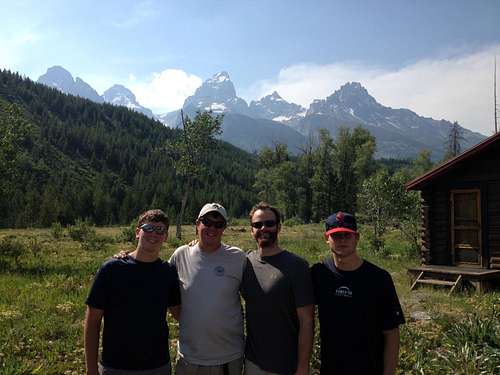


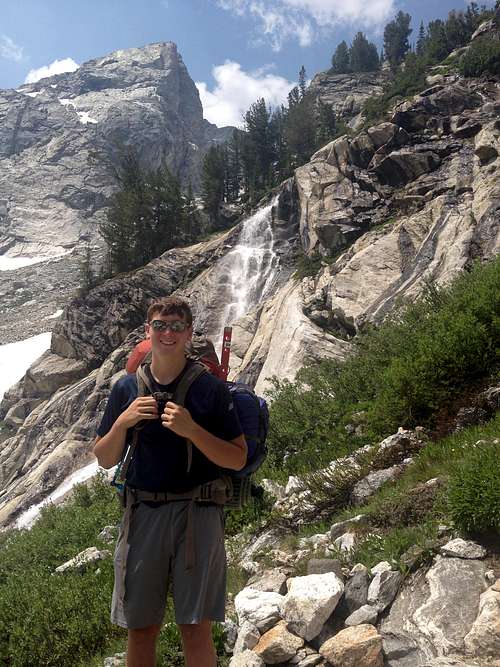
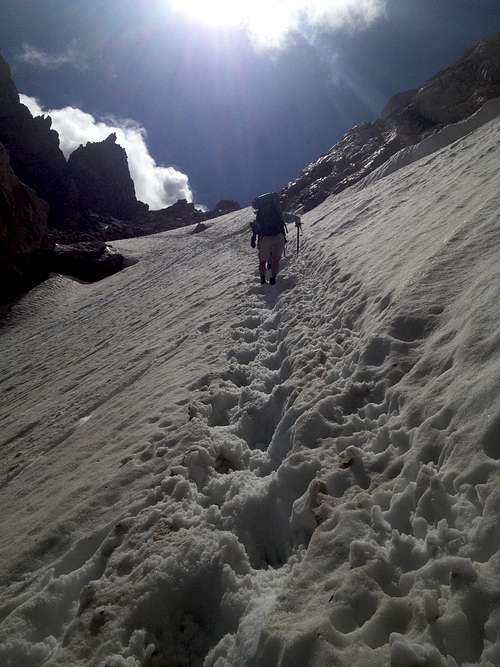
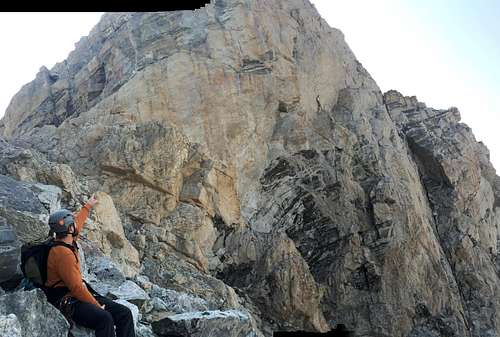
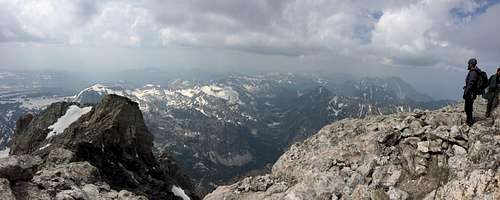
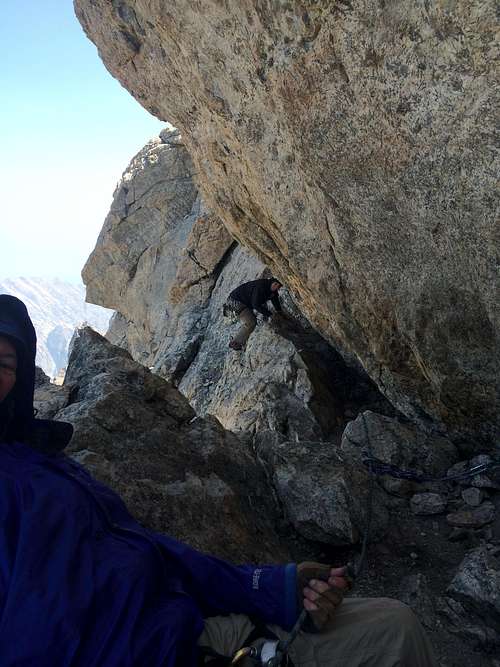
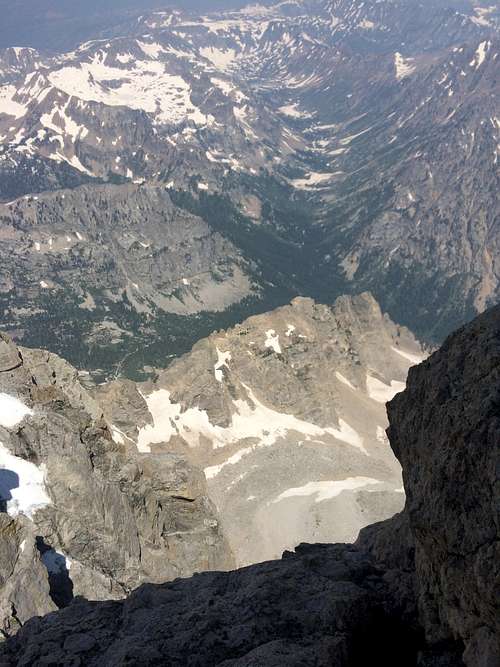
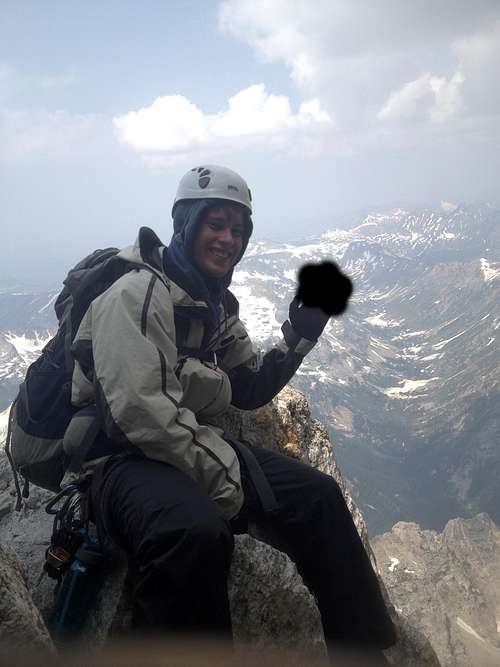




Comments
Post a Comment